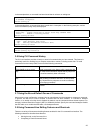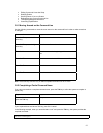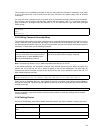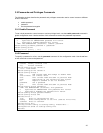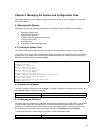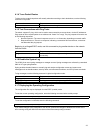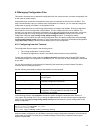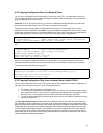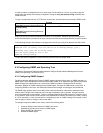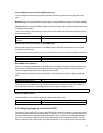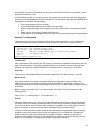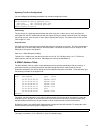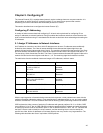
34
4.2 Managing Configuration Files
This section discusses how to download configuration files from remote servers, and store configuration files
on the router at system startup.
Configuration files contain the commands the router uses to customize the function of the IC35516. The
setup command facility helps you create a basic configuration file. However, you can manually change the
configuration by typing commands in a configuration mode.
Startup configuration files are used during system startup to configure the software. Running configuration
files contain the current configuration of the software. The two configuration files can be different. For
example, you may want to change the configuration for a short period rather than permanently. In this case,
you would change the running configuration using the configure terminal command, but not save the
configuration using the copy running-config startup-config command. To change the startup
configuration, you can either save the running configuration file to the startup configuration using the copy
running-config startup-config command, or copy commands from a file server to the startup configuration
(
copy tftp startup config
command) without affecting the running configuration.
4.2.1 Configuring from the Terminal
The configuration files are stored in the following places:
• The running configuration is stored in RAM
• The startup configuration is stored in nonvolatile random-access memory (NVRAM)
To enter the configuration mode, enter the
configure terminal
command at the privileged EXEC prompt.
The software accepts one configuration command per line. You can enter as many configuration commands
as you want.
You can add comments to a configuration file describing the commands you have entered. Precede a
comment with an exclamation point (!).
Use the following commands to configure the software from the terminal.
Command Purpose
configure terminal
Enters global configuration mode and select the
terminal option.
Router(config)# The global configuration prompt. Enter the
necessary configuration commands.
End or press Ctrl-Z (^Z)
Exits global configuration mode.
Copy running-config startup-
config
Saves the configuration file to your startup
configuration. On most platforms, this step saves the
configuration to NVRAM.
In the following example, the hostname command is used to change the hostname from "Router" to
"new_name". By pressing Ctrl-Z (^Z) or entering the end command, the user quits the global configuration
mode. Finally, the copy running-config startup-config command saves the current configuration to the
startup configuration.
Router# configure terminal
Router(config)# hostname new_name
new_name(config)# end
new_name# copy running-config startup-config
When the startup configuration is in NVRAM, it stores the current configuration information in text format as
configuration commands, recording only non-default settings. The memory is checksummed to guard
against corrupted data.



